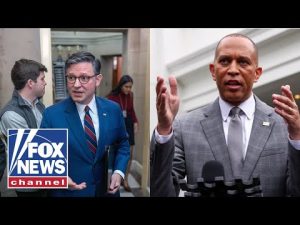At a time when the phrase “free speech” seems almost contraband, a recent event at a university campus has once again highlighted the constant battle of conservative voices striving to be heard. The peaceful event, coordinated by the Charlie Kirk Show and featuring comedian and actor Rob Schneider, was abruptly thrown into chaos. The perpetrators? A horde of far-left agitators, displaying behavior as predictable as it was disruptive. These activists seemed to have confused the art of peaceful protest with a new form of interpretive dance, one that involved a car backfiring mistakenly for gun violence and resulted in police intervention. Imagine trying to listen to a comedy routine with all of that going on!
The university, perhaps in an attempt to showcase its comedic skills, situated its so-called Free Speech Plaza right at the entrance of the venue. If only irony could be deposited in bank accounts, the institution could be quite well-off. Instead, it served as a channel for chaos, funnelling attendees through a narrow path that proved as straightforward as a maze in the darkness. Attendees were met not with the cheer of enthusiasm but a cacophony of shouting from masked crusaders of chaos who mistook vocal chords for swords.
The trouble with the event started well before it opened. The university’s decision to use their own ticketing system seemed less a matter of logistics, and more an opportunity for shenanigans. As predictable as an infomercial on repeat, extremists grabbed tickets faster than lightning, only to mysteriously not show up. The seats were left notably vacant, in a rather uninspired magic trick to make a crowd vanish—or appear as if it had never existed at all. Meanwhile, many hopeful attendees were left ticketless, forming an external crowd worthy of its own applause.
Of course, the antics didn’t end there. Bizarrely, an individual attempted to snatch a cross from around an attendee’s neck. This led to a confrontation that one could hardly distinguish from slapstick comedy, were it not for its seriousness. The assailant found themselves not on the path to sainthood but rather facing legal consequences. The silver lining, if one could even call it that, is that at least some sense of justice seemed poised to prevail.
Security—both physical and ideological—remains a pressing concern. The local authorities and the university appeared to look upon the chaos unfolding with a quizzical curiosity rather than urgency. Despite the very real threat presented and the calls for more proactive measures, they seemed intent on adhering to an unusual laissez-faire approach. Courageous organizers and attendees continue to stand firm, but as the tour moves forward, the question remains: How many times must freedom of expression narrowly dodge disaster before the rhetoric of safety becomes action rather than vague pronouncement?







